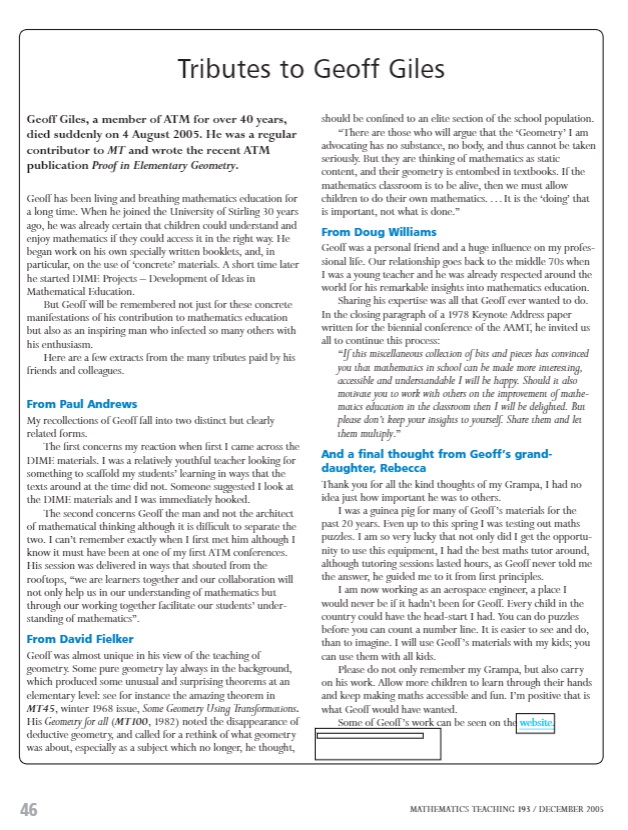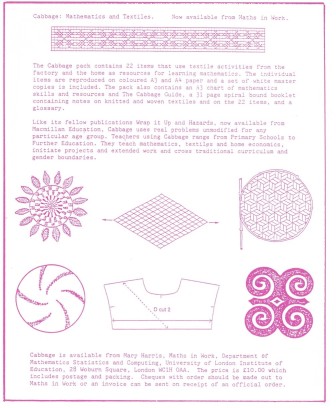RESOURCES
The way that Smile related to the rest of the world is evident in the wealth of resources referenced on the network, both those produced by Smile (link to subtheme changing our understanding of the world) and those which drew on other sources. The rationale for the inclusion of ‘commercial material’ is discussed in an early edition of Splash.
The DIME materials, developed by Geoff Giles, will be familiar to many. Geoff’s focus on the use of concrete materials is echoed in many other Smile resources. Tributes to Geoff are published in Mathematics Teaching 193 (December 2005). We are grateful to the Association of Teachers of Mathematics (ATM) for granting permission for us to reproduce this page from the journal.

Smile adopted the DIME materials at an early stage, engaging in trialling materials and incorporating the revised booklets on the network. These materials formed a substantial part of the materials on angle, 3-D and mappings.

Leapfrogs
Leapfrogs booklets, collections of pictures and diagrams on a theme, were another valuable resource. These booklets have been digitised by the STEM centre and are available here: https://www.stem.org.uk/elibrary/resource/28786

Image from Links (Hutchinson for Leapfrogs).
Maths in work, Cabbage and Wrap it up – the work of Mary Harris

The work of Mary Harris was enthusiastically received by Smile teachers. Mary has written about the exhibition ‘Common Threads’ which developed from this work in Harris, M. (1995) Chapter 9 Common threads: Perceptions of mathematics education and the traditional work of women, in Rogers, G. & Kaiser, G. (eds.) Equity in Mathematics Education.
TV
Splash provides evidence of the huge shift in resources available to schools. In 1979 an announcement appeared about three experimental Smile TV programmes – with an offer of the loan of a video recorder if a school didn’t have one!

This national archives blog gives further insights into the scale of the ILEA television service: http://blog.nationalarchives.gov.uk/blog/trainee-tuesday-broadcasting-education/
Micro-computers
Throughout the 1970s and 1980s there were huge developments in the use of micro-computers (see UK National Archive of Educational Computing) and Smile teachers were closely involved (see for example, women and micros). Information on the first 30 Smile programs can be found here: http://www.naec.org.uk/artefacts/software/micro-smile . The microsmile booklet has been digitised and is available here: http://www.naec.org.uk/artefacts/software/micro-smile/micro-smile-booklet


